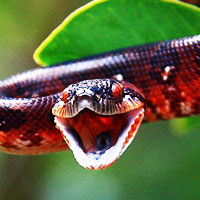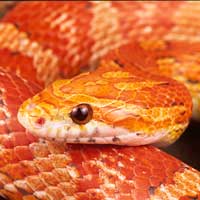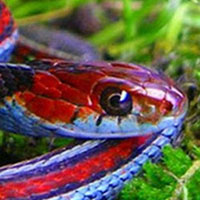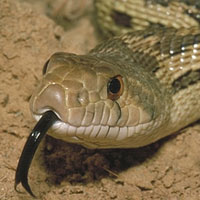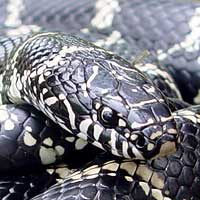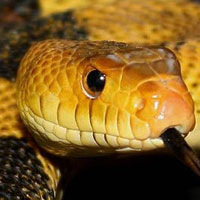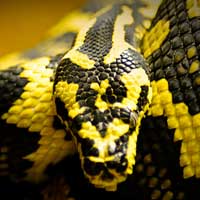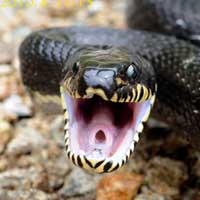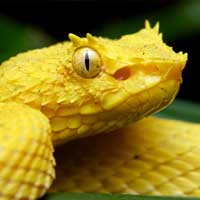Hog Island Boa: A Rare and Captivating Boa with a Gentle Temperament
The Hog Island Boa is a naturally occurring locality of the boa species known scientifically as Boa imperator, a member of the Boidae family. This rare and visually stunning boa originates from the Cayos Cochinos islands off the coast of Honduras and is prized for its lighter coloration, gentle temperament, and more manageable size compared to mainland boas.
Scientific Name: Boa imperator
Snake Family: Boidae
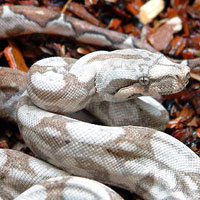
What Makes the Hog Island Boa So Unique and Sought After?
The Hog Island Boa is a rare and stunning locality of Boa imperator that hails from the Cayos Cochinos (Hog Islands) off the northern coast of Honduras. A member of the Boidae family, it’s famous for its naturally hypomelanistic appearance—lighter coloration and reduced black pigment—which gives it a striking pastel or “ghost” look, especially after shedding. These snakes are not just beautiful; they’re also known for being one of the calmest boas in the hobby. Their manageable size and docile temperament have made them a favorite among experienced collectors and responsible first-time keepers alike.
Other Common Names for the Hog Island Boa
- Cayos Cochinos Boa
- Hog Island Locality Boa
- Hog Island Boa Constrictor
- Hoggie (colloquial)
- Boa imperator “Hog Island”
Native Habitat of the Hog Island Boa: Island Life in the Wild
The Hog Island Boa is endemic to the Cayos Cochinos, a small archipelago located off the northern coast of Honduras in the Caribbean Sea. These islands are remote, tropical, and relatively undisturbed, offering a unique environment that has contributed to this boa’s smaller size, reduced melanin, and even a tendency to display pink hues after shedding. Unlike mainland boas, which inhabit a wider range of climates, the Hog Island Boa evolved in a more stable and humid coastal environment.
Temperatures on the islands generally stay between 78–88°F (25–31°C), with moderate seasonal fluctuations and high humidity levels between 70–90%. These snakes are largely terrestrial but may climb low trees or shrubs, especially when young. Due to the limited size of their native range, wild populations are extremely vulnerable to habitat disruption, and many in the hobby today are captive bred.
| Environmental Factor | Native Range Conditions |
|---|---|
| Temperature | 78–88°F (25–31°C) |
| Humidity | 70–90% |
| Elevation | Sea level (0–50 ft) |
| Habitat | Coastal forest and scrublands |
Feeding the Hog Island Boa: What to Know About Their Diet and Appetite
In their natural habitat, Hog Island Boas likely feed on a variety of small mammals, birds, and lizards, but data is limited due to the remoteness of their native islands. In captivity, they do extremely well on a diet of appropriately sized rodents. Because they are naturally smaller than other Boa imperator localities, they don’t require as large or frequent meals.
- Hatchlings: One fuzzy or hopper mouse every 5–7 days
- Juveniles: One small rat or adult mouse every 7–10 days
- Adults: One small to medium rat every 10–14 days
The prey size should never exceed the thickest part of the snake’s body. Overfeeding can lead to obesity, which is one of the most common health issues in captive boas. Provide fresh water at all times and monitor hydration, especially during shedding cycles. Hog Island Boas may occasionally fast during cooler months or breeding season—this is normal as long as body condition remains stable.
Feeding frozen/thawed prey is preferred to prevent injury. Always thaw prey thoroughly and avoid handling the snake for at least 48 hours after feeding to reduce stress and regurgitation risk.
Behavior and Temperament: Why Hog Island Boas Are Beloved for Their Demeanor
One of the reasons Hog Island Boas are so highly valued in the reptile community is their exceptionally calm and curious temperament. Unlike some boas that can be nippy or defensive when young, Hog Island Boas are generally docile from an early age, making them a great choice for reptile keepers looking for a large but manageable snake.
These boas are alert, slow-moving, and tolerant of regular handling. They’re rarely defensive unless stressed or improperly housed. Even adult males tend to remain gentle, and they often enjoy exploring their enclosure or their keeper’s arms during handling sessions.
- Activity Cycle: Primarily nocturnal or crepuscular
- Defensive Displays: Rare; most bites are feeding-related
- Social Needs: Solitary; should never be cohabitated
- Interaction: Tolerates and often enjoys gentle handling
Providing an enriched environment helps stimulate healthy behavior. Include hides, climbing structures, and a consistent day-night cycle. Avoid overexposure to handling, especially after meals or during shedding.
Lifespan and Health: How to Keep a Hog Island Boa Thriving for Decades
When properly cared for, Hog Island Boas can live for 20 to 30 years in captivity. Their hardiness is a key factor in their popularity among both beginner and experienced keepers. However, like all snakes, they are susceptible to a number of health concerns if not kept under ideal conditions.
- Respiratory Infections: Caused by low temperatures or poor ventilation
- Parasites: Mites or internal worms, often introduced by feeder animals
- Shedding Issues: Common when humidity is too low
- Obesity: Resulting from overfeeding or inadequate enclosure size
Routine observation is your best defense. Check for clear eyes, healthy skin, consistent feeding behavior, and regular shedding. A yearly check-up with a reptile vet is advisable, especially if the snake is used in breeding.
| Health Indicator | Healthy Signs |
|---|---|
| Shedding | Complete, clear eye caps, every 4–6 weeks |
| Feeding | Consistent interest in food, no regurgitation |
| Hydration | Supple skin, alert behavior, no retained shed |
| Lifespan | 20–30 years in captivity |
Reproduction: Breeding Considerations for Hog Island Boas
Breeding Hog Island Boas is possible in captivity and has contributed to preserving this rare locality. Like other Boa imperator localities, they are ovoviviparous—giving birth to live young rather than laying eggs. Captive breeding must be approached responsibly to preserve the unique traits of the locality.
To stimulate breeding, a mild cooling period is usually introduced in the fall. Temperatures are reduced slightly for 4–6 weeks before the male and female are introduced. Courtship behavior includes tail-wrapping and gentle pressure along the female’s body. Mating may occur multiple times over several weeks.
- Breeding Age: Females: 3+ years, Males: 2+ years
- Gestation Period: 100–120 days
- Litter Size: Typically 10–20 live young
Neonates are typically 15–18 inches long and begin feeding after their first shed. It’s important to house them individually and monitor feeding responses closely. Because this locality is prized for its purity, breeders should avoid crossbreeding with other localities or morphs.
Handling and Care: Building Trust and Providing Long-Term Comfort
Hog Island Boas respond well to regular, calm handling and can be one of the most interactive large snakes a keeper can own. Begin handling juveniles early—around 1–2 times per week—and always support their full body when lifting. These snakes are heavy-bodied and should never be left to dangle unsupported.
- Frequency: 1–3 times per week (outside of feeding or shedding)
- Technique: Use both hands, avoid the head, and stay calm
- Post-feeding rest: Avoid handling for 48 hours after meals
- Children: Supervise closely; only recommended for older children
Proper care also includes maintaining a clean enclosure. Spot clean daily, fully clean every 4–6 weeks, and change water frequently. Lighting should follow a 12-hour cycle. Heating should come from under-tank pads or radiant heat panels—avoid heat rocks.
By providing consistent care, enrichment, and routine health checks, your Hog Island Boa can remain a docile, striking companion for decades.
Other Snakes In This Species
 Argentine Boa
Argentine Boa Calabar Burrowing Boa
Calabar Burrowing Boa Colombian Rainbow Boa
Colombian Rainbow Boa Common Boa
Common Boa Cooks Tree Boa
Cooks Tree Boa Cuban Boa
Cuban Boa Desert Rosy Boa
Desert Rosy Boa Desert Sand Boa
Desert Sand Boa Dumeril Boa
Dumeril Boa Egyptian Sand Boa
Egyptian Sand Boa Emerald Tree Boa
Emerald Tree Boa Haitian Boa
Haitian Boa Hog Island Boa
Hog Island Boa Madagascar Ground Boa
Madagascar Ground Boa Madagascar Tree Boa
Madagascar Tree Boa Pacific Boa
Pacific Boa Red Sand Boa
Red Sand Boa Rough-scaled Sand Boa
Rough-scaled Sand Boa Rubber Boa
Rubber Boa True Red Tail Boa
True Red Tail Boa Western Rainbow Boa
Western Rainbow Boa
